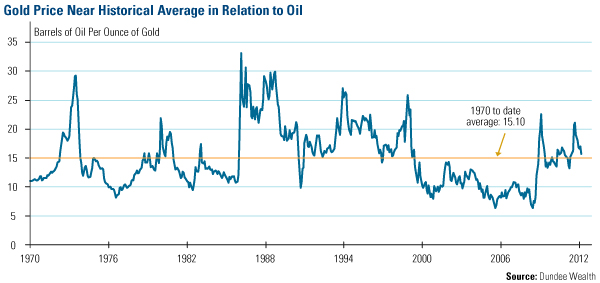Gold Market Radar (April 30, 2012)

For the week, spot gold closed at $1,662.75 down $19.82 per ounce, or 1.2 percent. Gold stocks, as measured by the NYSE Arca Gold Miners Index, rose 1.5 percent. The U.S. Trade-Weighted Dollar Index slid 0.61 percent for the week.
Strengths
- So when you thought the investment case for gold was all over in March with no imminent QE3 coming from the Fed, guess who was buying gold? – Central banks who fully understand you can’t park your reserves in the currencies of countries that are mired in an endless wall of debt. Overall, central banks apparently purchased no less than 58 tonnes in March. The three largest buyers were Mexico, which increased its holdings by 16.81 tonnes to a total of 122.58 tons, Russia with purchases of 16.55 tons giving it total reserves of 895.75 tons, and Turkey with 11.48 tons taking it to 209.6 tonnes in reserves. Some suggest an acceleration in central bank purchases could continue throughout the year as first quarter economic growth numbers are looking a bit flaccid. Last year, central banks bought 439.7 tonnes of gold, the biggest annual increase in almost five decades.
- Agnico-Eagle Mines reported first quarter results that handily beat market expectations. CEO Sean Boyd noted that Agnico-Eagle produced more gold in the first quarter of 2012 than in the first quarter of 2011, which included production of the now suspended Goldex mine. Compared to its peers, Agnico-Eagle has one of the highest quality resource statements and has a great corporate culture, so we expect the company to continue to gain market respect for the rest of the year.
- Gold Standard Ventures reported two drill holes from its Railroad project in Nevada. Drill hole 12-1 hit 164 meters at 3.38 g/t gold while the second one about 100 meters south of drill hole 12-1 netted 56 meters of 4.29 g/t Au. Gold Standard’s share price finished the week up 59 percent.
Weaknesses
- Pessimism in gold stocks may have reached a peak. In a recent marketing trip, Stephen Walker, a top gold mining analyst at RBC, noted investor sentiment still seemed a bit depressed as investors appeared to be waiting for a catalyst to bring gold off the bottom, such as emerging market inflation, QE3, or central bank buying, before stepping back into gold stocks. As a point of contrast, IAMGOLD came to the table on Friday to buy Trelawney Mining, sending the share price up 41 percent. It is interesting to note that Barrick Gold just sold its 20 percent stake in Highland Gold the day before. Barrick Gold has been criticized in the past for doing deals when price points hit painful levels, such as buying both a copper company and an oil company at peak copper and oil prices. Interestingly, IAMGOLD was one of the few companies to make an acquisition when gold stocks plummeted in late 2008 through early 2009.
- Feedback from the Zurich gold show is that company attendance outnumbered investor attendance by a good margin, again reflecting some of the discontent with buying gold companies. One participant we spoke with noted there was even some talk about industry participants coming to terms, when it comes to marketing the profitability of the company, with using cash cost versus all-in costs or total production costs.
- Cash cost is a concept that is a legacy measure which companies used to figure out if they were going to go bankrupt the next week. It says nothing about whether the company is profitable and that is what investors are concerned with today. For the senior gold miners, investors want to know if the company is making a profit and can grow its dividend. When companies espouse low cash cost numbers that don’t reflect the full cost to produce an ounce of gold, it just becomes a lightning rod for governments to increase taxes.
Opportunities
- Bob Hoye of Institutional Advisor published a report on Friday titled “Gold Consolidation Approaching an End.” The report shows that the relative strength of mining shares to the price of gold bullion is at extremes only seen five times in the past one hundred years. The report also notes that, historically, investors should look to the junior tier names to exhibit the greater price action relative to their senior peers.
- Goldman Sachs noted it expects to see higher gold prices up to its previous target of $1,840 an ounce this year. With real GDP adjusted for the build in inventories coming in at only 1.6 percent in the first quarter, some form of quantitative easing may be in the cards.
- Quatar Investment Authority (QIA), the Gulf state’s aggressive sovereign wealth fund, noted it has more than $30 billion to spend on investments this year and sees commodities as a key target.
Threats
- Has anything been learned by the government? We had a tech boom partially driven by Y2K spending. We had lending standards relaxed so that anybody who wanted to buy a home could get one at an inflated price. We have health care reform which will increase the patient load on the medical system, but does nothing to incentivize an increase in the supply of doctors and nurses which we will surely need. And now the government wants to continue to give loans to college students at below market rates? Student debt has now reached $1 trillion dollars and jobs are scarce, but is this the solution?













